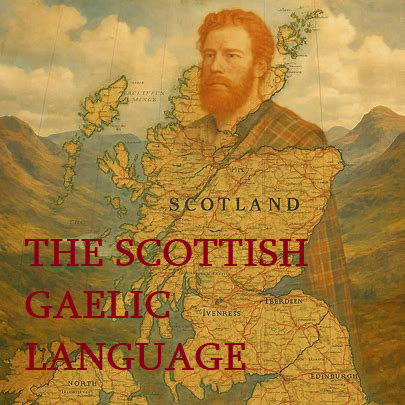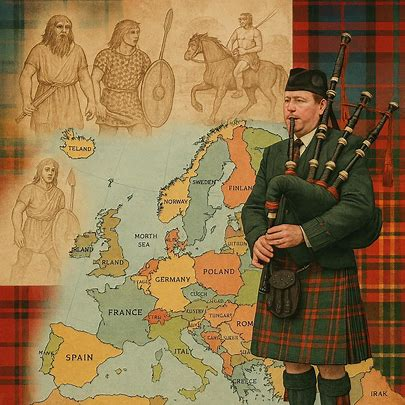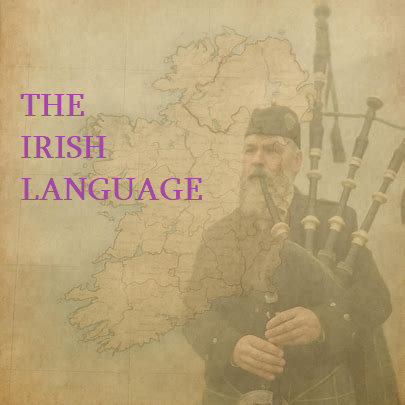Gaelic Scottish Language Family
The Gaelic Scottish language family refers primarily to Scottish Gaelic (Gàidhlig), a member of the Goidelic or Gaelic branch of the Celtic languages, themselves part of the vast Indo-European language family. Within the Goidelic branch, Scottish Gaelic shares a close relationship with Irish (Gaeilge) and Manx (Gaelg).
1. Language Family Classification
| Language Family Level | Name | Example Members |
|---|---|---|
| Macro-family | Indo-European | Latin, Greek, Sanskrit, English |
| Family | Celtic | Irish, Welsh, Breton, Cornish |
| Branch | Goidelic (Gaelic) | Irish, Scottish Gaelic, Manx |
| Individual Language | Scottish Gaelic (Gàidhlig) | Spoken in Scotland |
2. Origins and Early Development
Scottish Gaelic emerged from Old Irish, the language of the early medieval Irish kingdom of Dál Riata, which extended across north-eastern Ireland and western Scotland around the 5th century CE.
Gaelic-speaking settlers brought with them their language and culture, which gradually spread across the Highlands and Islands. By the 9th century, Gaelic had become the principal spoken language in the emerging Kingdom of Alba.
Between the 12th and 14th centuries, linguistic divergence between Ireland and Scotland gave rise to a distinct Scottish Gaelic, often referred to as Middle Gaelic during its transitional phase. This period saw the formation of regional dialects and the beginning of a literary tradition rooted in bardic poetry.
3. Historical Development
During the medieval period, Gaelic was the dominant language of much of Scotland north of the Forth–Clyde line. It was the language of the clans, the church, and poetic learning. However, its fortunes waned after the Union of the Crowns (1603) and Union of Parliaments (1707), as power and education became centred in the Lowlands, where Scots and later English predominated.
Following the Jacobite risings, especially after Culloden (1746), government suppression of Highland culture accelerated the decline of Gaelic. By the 19th century, Gaelic was confined largely to the Highlands and Islands, though it retained strong oral traditions, folklore, and song.
Today, Gaelic remains a cornerstone of Scotland’s cultural identity, sustained through media, education, and community revival.
4. Dialectal Variation
Scottish Gaelic has several regional varieties, often grouped as follows:
| Region | Example Feature | Example Word | Notes |
|---|---|---|---|
| Western Isles (Outer Hebrides) | Conservative vowels | mac “son” pronounced [mak] | Most traditional dialect |
| Skye and West Highland Mainland | Lenition retained strongly | bean “woman” [bɛn] → a’ bhean [ə vɛn] | Standard in education |
| Perthshire / Argyll (historical) | Archaic forms | an diugh “today” pronounced [ən djuː] | Now largely extinct |
Mutual intelligibility across dialects remains high.
5. Grammar and Structure
Scottish Gaelic grammar retains features typical of Celtic languages, including VSO word order, lenition (initial consonant mutation), and complex article forms. Below each grammatical section are example sentences with English glosses.
5.1 Word Order
Scottish Gaelic uses Verb–Subject–Object (VSO) order.
Examples:
-
Chunnaic mi an cù. — Saw I the dog. → “I saw the dog.”
-
Dh’ith iad am biadh. — Ate they the food. → “They ate the food.”
This structure differs from English SVO order (“I saw the dog”).
5.2 Articles
There is no indefinite article (“a” or “an”) in Gaelic. The definite article varies depending on gender, number, and initial sound.
| Article | Context | Example | Translation |
|---|---|---|---|
| an | before most consonants (masculine) | an cù | the dog |
| am | before labials (b, p, f, m) | am fear | the man |
| an t- | before vowels | an t-iasg | the fish |
| a’ | before feminine nouns | a’ bhean | the woman |
| na | plural definite article | na fir | the men |
Example (contrast):
-
cù — “a dog” (indefinite)
-
an cù — “the dog” (definite)
5.3 Noun Gender and Lenition
Scottish Gaelic nouns are masculine or feminine. Grammatical context often triggers lenition, where the initial consonant is softened.
| Base | Lenited | Example | Translation |
|---|---|---|---|
| bean | bhean | a’ bhean | the woman |
| bò | bhò | mo bhò | my cow |
| cat | chat | a’ chat | the cat |
Lenition is marked orthographically by adding an h after the consonant.
5.4 Demonstrative Pronouns
Gaelic demonstratives are typically post-nominal, following the noun they describe.
| Meaning | Form | Example | Translation |
|---|---|---|---|
| this | seo | an leabhar seo | this book |
| that (near) | sin | an taigh sin | that house |
| that (distant) | siud | an duine siud | that man (over there) |
Examples in context:
-
Is toil leam an leabhar seo. — “I like this book.”
-
Càit a bheil an taigh sin? — “Where is that house?”
5.5 Verbs and Conjugation
Gaelic verbs are generally conjugated for tense and mood, not for person. Most verbs use pre-verbal particles rather than endings.
| Tense | Example Verb (bi, “to be”) | Sentence | Translation |
|---|---|---|---|
| Present/Habitual | Tha mi | Tha mi sgìth. | I am tired. |
| Past | Bha mi | Bha mi anns an taigh. | I was in the house. |
| Future | Bidh mi | Bidh mi a’ falbh. | I will be going. |
| Conditional | Bhiodh mi | Bhiodh mi toilichte. | I would be happy. |
| Imperative | Bi! | Bi sàmhach! | Be quiet! |
Verbs also form progressive constructions using a’ + verbal noun:
-
Tha mi a’ leughadh an leabhair. — “I am reading the book.”
5.6 Prepositions and Contraction
Prepositions often combine (contract) with pronouns.
| Base Preposition | Meaning | + Pronoun | Example | Translation |
|---|---|---|---|---|
| le | with | leam | Tha e leam. | It is with me. |
| aig | at / with possession | agam | Tha leabhar agam. | I have a book. |
| ann an | in | annam | Tha e annam. | It is in me. |
Example:
-
Tha cù agam. — literally “There is a dog at me.” → “I have a dog.”
5.7 Adjectives
Adjectives usually follow the noun and agree in gender and number.
| Example | Translation |
|---|---|
| balach beag | a small boy |
| caileag bheag | a small girl |
| na balaich beaga | the small boys |
Lenition occurs with feminine singular nouns and following definite articles.
6. The Goidelic Family and Comparison
Scottish Gaelic, Irish, and Manx derive from Primitive Irish (c. 4th–6th centuries CE). Their shared origin explains their strong grammatical and lexical resemblance, though each evolved under different political and geographic influences.
6.1 Comparative Table: Goidelic Languages
| Feature | Scottish Gaelic | Irish | Manx | English Translation |
|---|---|---|---|---|
| Word Order | VSO | VSO | VSO | Verb–Subject–Object |
| Present “to be” | Tha mi | Tá mé | Ta mee | I am |
| Past “to be” | Bha mi | Bhí mé | Va mee | I was |
| “The man” | am fear | an fear | yn dooinney | the man |
| “The woman” | a’ bhean | an bhean | yn ven | the woman |
| “My house” | mo thaigh | mo theach | my hie | my house |
| “I saw the dog” | Chunnaic mi an cù | Chonaic mé an madra | Vonn mee yn moddey | I saw the dog |
| Indefinite article | None | None | yn (optional) | — |
| Mutual Intelligibility | High (with Ulster Irish) | High (with Gaelic) | Moderate | — |
Despite clear cognates, pronunciation and orthography diverge considerably. Manx spelling reflects English influence, whereas Irish and Gaelic preserve more historical orthography.
7. Relationship with Other Celtic Languages
The Celtic languages divide into two main branches: Goidelic (Q-Celtic) and Brittonic (P-Celtic). The distinction stems from an early sound change in Proto-Celtic, where the kw sound became k (or c) in Goidelic but p in Brittonic.
| Proto-Celtic Root | Goidelic Form | Brittonic Form | Meaning |
|---|---|---|---|
| kwenos | ceann (Gaelic) | pen (Welsh) | head |
| kwetwores | ceithir (Gaelic) | pedwar (Welsh) | four |
| kwālos | càl (Gaelic) | pâl (Welsh) | cabbage (borrowed) |
This phonological division defines the two main Celtic subfamilies.
8. Orthography and Pronunciation
Gaelic orthography is based on etymological spelling, representing historical pronunciation rather than modern phonetics. It distinguishes between broad (a, o, u) and slender (e, i) vowels, influencing consonant quality.
| Rule | Example | Pronunciation |
|---|---|---|
| Broad consonants with a/o/u | càl | [kaːl] |
| Slender consonants with e/i | ceilidh | [kʲeːli] |
9. Modern Status and Revitalisation
Contemporary Scottish Gaelic enjoys growing institutional support. The Gaelic Language (Scotland) Act 2005 recognised it as an official language of Scotland, mandating public bodies to promote its use.
Initiatives include:
-
BBC Alba (Gaelic television channel)
-
Radio nan Gàidheal
-
Gaelic-medium education (Foghlam tro Mheadhan na Gàidhlig)
-
Bilingual road signs and public notices
The 2022 Scottish Census recorded around 58,000 speakers (approx. 1.1% of Scotland’s population), with concentration in the Western Isles, Skye, and parts of the Highlands. Urban revival movements in Glasgow and Edinburgh further sustain its growth.
10. Cultural Significance
Gaelic literature, music, and oral traditions continue to flourish. Traditional song forms such as òrain mhòra (big songs), waulking songs, and piobaireachd (piping) preserve linguistic and cultural identity. Contemporary poets and musicians have revitalised Gaelic expression for modern audiences.
11. Summary Diagram: Historical Development
12. Conclusion
The Gaelic Scottish language family—centred on Scottish Gaelic—represents one of Europe’s most historically and culturally rich linguistic heritages. A branch of the Indo-European > Celtic > Goidelic lineage, it shares deep structural affinities with Irish and Manx while retaining its unique phonology, orthography, and grammar.
Despite historical suppression, Scottish Gaelic endures, supported by education, media, and cultural revival. Its grammatical complexity—featuring lenition, VSO syntax, article variation, and prepositional fusion—offers profound insights into the Celtic linguistic tradition.
As the language continues to adapt to modern contexts, it remains not only a symbol of Highland identity but also a living link to the earliest linguistic history of Scotland and Ireland.



